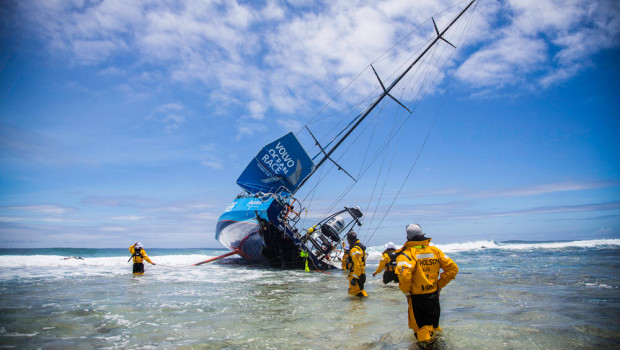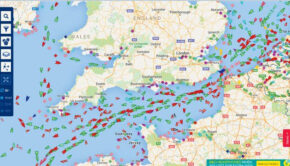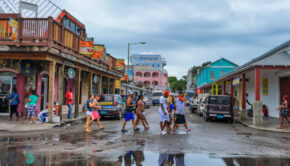Report reveals deficiencies leading to Volvo Ocean Race accident
Published on March 9th, 2015
Auckland, NZL (March 9, 2015) – An independent report into the grounding of Team Vestas Wind on Leg 2 of the Volvo Ocean Race was released today. It included a set of recommendations aimed at improving safety at sea for the entire offshore racing community.
Click here for full report.
In particular, it has suggested improving navigational charts and other on board software to avoid similar incidents in the future.
The Danish boat, Vestas Wind (Chris Nicholson/AUS), was stranded on a reef at Cargados Carajos Shoals in the middle of the Indian Ocean during the stage from Cape Town to Abu Dhabi on November 29. The crew were forced to abandon the boat.
The badly damaged Vestas Wind has since been retrieved from the reef and is being rebuilt in the Persico boatyard in Bergamo, Italy, with a view to returning to the race for the last two stages starting from Lisbon, Portugal in June.
The independent report into the incident, commissioned by the Race in December, was conducted by acknowledged experts in the field – Rear Admiral (Rtd) Chris Oxenbould (chair), Stan Honey and Chuck Hawley.
The panel reported that the facts of the grounding had already been well publicised and that its findings regarding what happened are based on interviews with the crew, race management, other relevant parties and recorded data were not contentious.
“The team was unaware of any navigational danger in its vicinity, incorrectly assessed the minimum charted depth at Cargados Carajos Shoals to be 40 metres and understood that it was safe to sail across the shoals,” summed up the panel.
The panel has not apportioned blame, but made the following conclusions:
i. There were deficiencies in the use of electronic charts and other navigational data onboard Vestas Wind.
ii. There were also deficiencies in the cartography presenting the navigational dangers on the small and medium scales of the chart system in use.
iii. The emergency management worked well and there were no administrative or race management issues that contributed to the incident.
Its main recommendations are:
i. That a provided set of guidelines for the use of electronic charts be endorsed and adopted in the race and subject to further review and refinement.
ii That the providers of the chart system used and the manufacturers of one of the on board navigation software systems be advised of the perceived deficiencies.
iii. The panel suggests that Volvo Ocean Race uses its leverage and influence in the yachting industry to encourage the development of an improved navigation system, including charts and software.
It also made five minor recommendations (page 63, paragraph 262) relating to the conduct of the race. Volvo Ocean Race CEO Knut Frostad said all recommendations would be considered by the event.
“Our plan is to circulate the guidelines to the skippers and navigators (as recommended by the report) here in Auckland, and also include them in future Notices of Race,” said Frostad. “It is our intention that the report serves as a useful document for the entire offshore racing community in the future. Accidents will always happen at sea – we hope this helps make them less likely.”
Background:
Rear Admiral Chris Oxenbould is a former deputy chief of the Australian Navy and an experienced ocean-racing yachtsman with a particular expertise in navigation. He is also the chairman of the Yachting Australia National Safety Committee. Assisting Rear Admiral Oxenbould on the report were ocean navigational expert Stan Honey, who won the Volvo Ocean Race 2005-06 as navigator onboard ABN AMRO ONE, and Chuck Hawley, who serves as the chairman of the U.S. Sailing Safety at Sea Committee.









 We’ll keep your information safe.
We’ll keep your information safe.